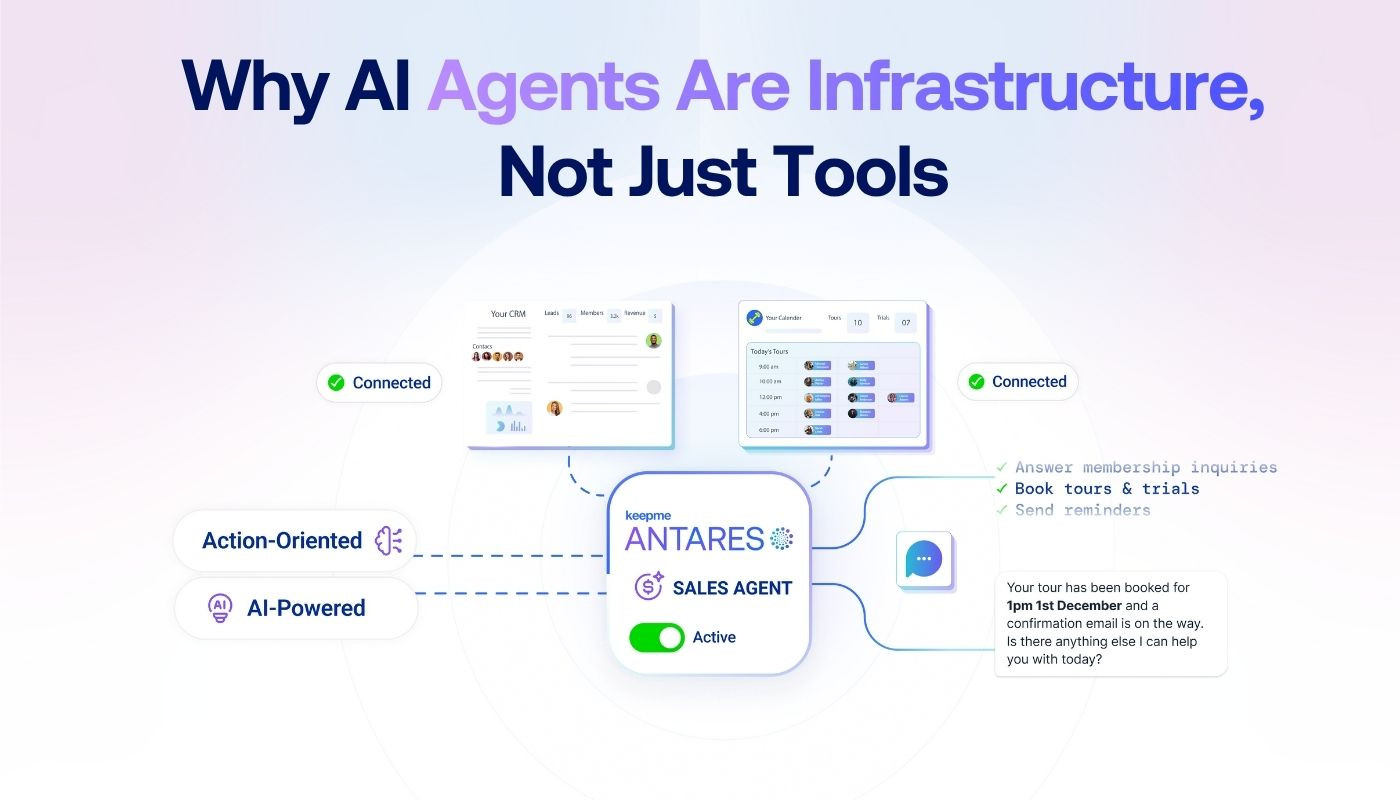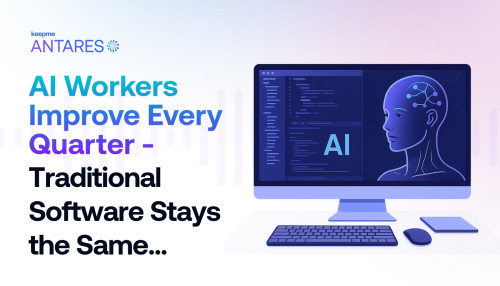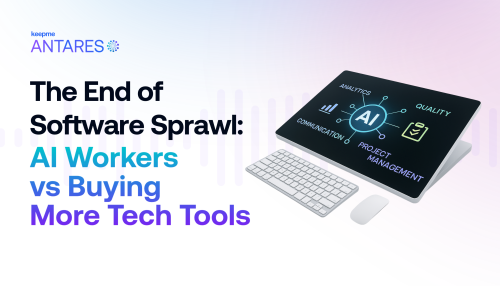Every decade or so, the technology conversation shifts from features to foundations. During the 2000s, the focus was getting online. The 2010s brought cloud migration and mobile-first design. Each wave initially appeared as discrete projects: building a website, migrating to AWS, redesigning for smartphones. But what separated winners from laggards wasn't adoption speed. It was understanding they were establishing new infrastructure.
We've reached that inflection point again with AI agents. Yet most of the conversation remains stuck in the features phase.
Fitness operators are raising reasonable questions: will this handle tours better than current systems? Can it reduce sales team workload? What's the first quarter ROI? These questions matter, but they overlook the deeper transformation underway. AI agents aren't replacing tech stack components. They're becoming the operating layer that everything else builds upon.
The distinction matters because infrastructure decisions compound in ways feature purchases don't.
The Compounding Architecture
Traditional software delivers peak performance on day one, then gradually becomes legacy. You pay for incremental upgrades, but core capability flatlines. AI agents invert that curve. What you deploy today becomes the baseline, not the ceiling.
As explored in recent analysis of AI workers, foundation models don't just improve; they make everything built on them better simultaneously. When GPT-5 launched in August, fitness operators with AI agents didn't purchase an upgrade. Their agents simply became more capable at handling complex conversations, retaining context, and recovering from edge cases. Same deployment. Stronger performance.
That's not a feature update. That's infrastructure that appreciates.
But the compounding effect extends further. These improvements stack on domain knowledge your agents have already absorbed: your pricing structure, your brand voice, your member behaviors, your operational quirks. Every intelligence leap doesn't just make the AI smarter generally; it makes your specific AI better at your specific business. The advantage accelerates over time.
Building vs Buying
This is why treating AI adoption as procurement misses the point. You're not buying software. You're establishing infrastructure that will define operational capacity for the next five years.
Operators who moved early aren't just seeing immediate efficiency gains. They're building institutional knowledge into systems that keep getting smarter. Their AI agents have months of embedded learning, refined through thousands of real interactions, now amplified by continuous model improvements. Competitors adopting today start from scratch with each new release, accessing raw capability without contextual depth.
The gap doesn't close. It widens.
The New Digital Transformation
If this sounds familiar, it should. Cloud migration felt like a cost center until it suddenly became the foundation for everything from remote work to real-time analytics. Mobile-first design seemed like a nice-to-have until it became the primary interface for entire customer relationships.
AI agents are following the same pattern, but faster. This isn't about automating tasks or reducing headcount. It's about establishing an operational layer that continuously improves, learns from every interaction, and compounds its value quarter after quarter.
The question isn't whether to adopt AI agents. It's whether to start building that infrastructure now, while the compounding advantage still belongs to early movers, or wait until it's standard practice and you're starting from zero.
Infrastructure decisions aren't measured in immediate ROI. They're measured in what becomes possible three years from now.
---3.png)




